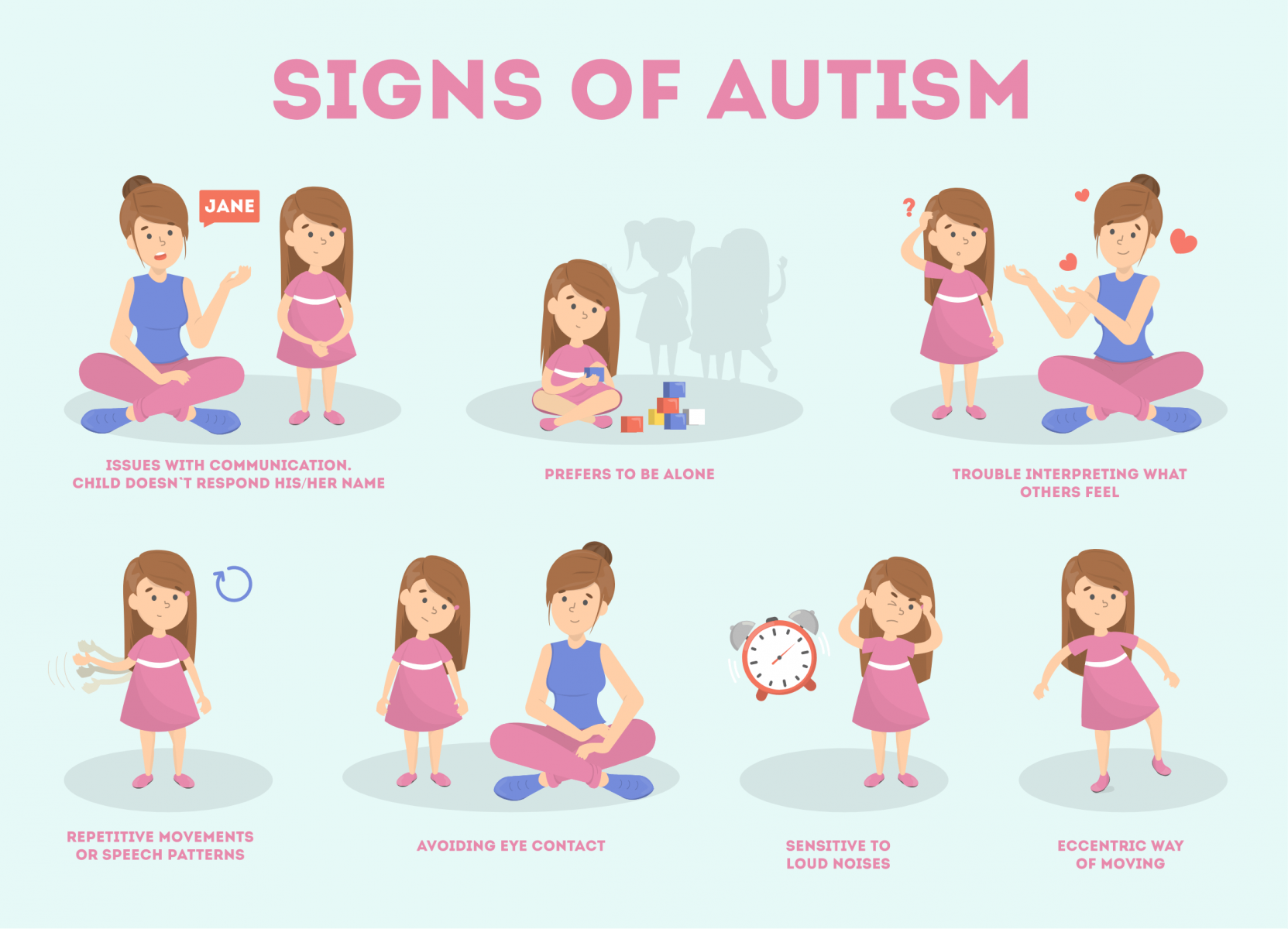Exploring Autism: Strategies for Efficient Communication and Communication
Efficient communication and communication with individuals on the autism spectrum demand an extensive understanding of their distinct needs and preferences. Strategies such as utilizing clear language, using aesthetic supports, and cultivating consistent routines can substantially enhance interaction and minimize anxiousness. Recognizing the significance of non-verbal hints and shared rate of interests paves the means for significant links. The details of these strategies expose additional considerations that merit exploration, especially in how they can be adapted to individual experiences and varied contexts. What might these adjustments appear like in method?
Recognizing Autism Range Disorder
Autism Range Condition (ASD) incorporates a range of neurodevelopmental conditions identified by obstacles in social communication, communication, and repetitive habits. The term "range" shows the varied symptoms and varying levels of intensity experienced by people with ASD. While some might display substantial impairments, others may display high-functioning attributes, enabling better self-reliance in life.
The start of ASD generally happens in very early childhood, with signs often recognizable by age two. Very early indicators might include delayed speech development, minimal eye call, and difficulties in recognizing social hints. Although the specific etiology of ASD stays vague, research study recommends a combination of hereditary and environmental variables plays an important function in its growth.
As an outcome, treatments and support tailored to individual needs are essential for cultivating communication and social abilities. Acknowledging the complexity of ASD is essential for advertising recognition, acceptance, and reliable strategies that facilitate significant communications with people on the spectrum.

Significance of Clear Interaction
Reliable interaction is crucial for cultivating understanding and link, specifically for individuals with Autism Spectrum Problem (ASD) Clear interaction not only helps with social interactions but additionally boosts the person's ability to express their feelings, thoughts, and demands. For individuals with ASD, the subtleties of language can often be testing; for that reason, utilizing distinct and uncomplicated language is vital.
In addition, clear interaction aids decrease frustration and anxiety that may arise from misconceptions. When messages are shared in a constant and direct manner, people with ASD are much better equipped to analyze info accurately, which can dramatically boost their social interaction and involvement in different settings.
Establishing regimens and making use of aesthetic assistances can better boost clear communication. These approaches supply individuals with foreseeable frameworks that aid understanding and retention of details. Additionally, proactively being and listening client throughout interactions advertises an encouraging setting where people with ASD feel valued and understood.
Inevitably, focusing on clear communication not just equips people with ASD yet additionally fosters more purposeful links with their peers, caretakers, and the bigger neighborhood, leading the way for comprehensive communications and joint connections. - autism
Non-Verbal Communication Methods
Communication extends past words, and for people with Autism Spectrum Condition (ASD), non-verbal hints play a significant function in communications. Non-verbal communication strategies can include facial expressions, motions, body movement, and eye get in touch with, every one of which work as essential parts for conveying purposes and emotions.
Comprehending and interpreting these non-verbal signals can improve interactions with individuals with ASD. A cozy smile or open pose can develop an inviting ambience, motivating interaction. In a similar way, utilizing visual help-- such as photo cards or signs-- can connect communication voids and help share messages better.
It is also vital to be conscious of individual room, as people with ASD may have various comfort levels relating to distance. Observing their reactions to physical closeness can notify ideal changes.

Creating Supportive Settings
Producing a helpful environment is important for promoting favorable communications and improving the well-being of individuals with Autism Spectrum Condition (ASD) Such environments can dramatically minimize anxiety and develop a sense of safety, allowing people to share themselves extra easily.
To achieve this, it is essential find this to think about sensory sensitivities that individuals with ASD might experience. Customizing the physical room to consist of soft lights, very little history sound, and comfortable seats can produce a relaxing atmosphere. Additionally, using regular regimens and clear visual schedules can aid people expect shifts and reduce uncertainty, more promoting convenience.
Social areas must be structured to decrease overwhelming stimulations while giving opportunities for engagement in favored activities. Helping with areas designated for quiet time can likewise work as a sanctuary throughout minutes of tension. Notably, including components of selection empowers people, permitting them to exercise firm in their setting.

Encouraging Social Communications
Fostering social communications amongst people with Autism Range Problem (ASD) calls for intentional methods that focus on comfort and involvement. Developing foreseeable regimens can assist reduce anxiety, making social settings a lot more approachable. Creating organized atmospheres with defined obligations and roles permits individuals to engage without the frustrating pressure of unstructured social dynamics.
Incorporating rate of interests and staminas into social tasks can act as a driver for communication. Arranging group activities around shared pastimes or topics of fascination can promote all-natural conversations and links. Additionally, utilizing aesthetic supports, such as pictorial routines or social scripts, can assist in comprehending social signs and assumptions.
Designing ideal social habits is important - autism. Adults and peers should show reliable communication strategies, including energetic listening and turn-taking. Role-playing scenarios can also give a risk-free room for individuals to exercise these abilities
Finally, promoting peer partnerships via inclusive practices is vital. Urging comprehensive playdates or group trips you could try this out can develop chances for socializing in a comfy setup. By applying these caretakers, educators and techniques can substantially improve social interactions for people with ASD, promoting their total social advancement and health.
Conclusion
In verdict, efficient interaction and interaction approaches are vital for supporting people with Autism Spectrum Problem. Emphasizing clear language, integrating non-verbal cues, and developing foreseeable routines considerably boost interaction and lower stress and anxiety. Creating encouraging settings cultivates safe social communications, while motivating shared rate of interests facilitates significant links. Ultimately, these approaches equip individuals with autism to browse social landscapes, promoting their overall health and allowing the advancement of lasting partnerships.
Reliable communication and interaction with people on the autism range demand a comprehensive understanding of their unique requirements and choices. Clear interaction not just helps with social interactions yet additionally boosts the person's ability to share their emotions, demands, and ideas.Fostering social interactions among people with Autism Range Problem (ASD) calls for deliberate methods that prioritize comfort and interaction. By executing these instructors, caregivers and techniques can substantially enhance social communications for individuals with ASD, advertising their general social growth and well-being.
In final thought, effective communication and interaction methods are essential for supporting individuals with Autism Spectrum Problem.